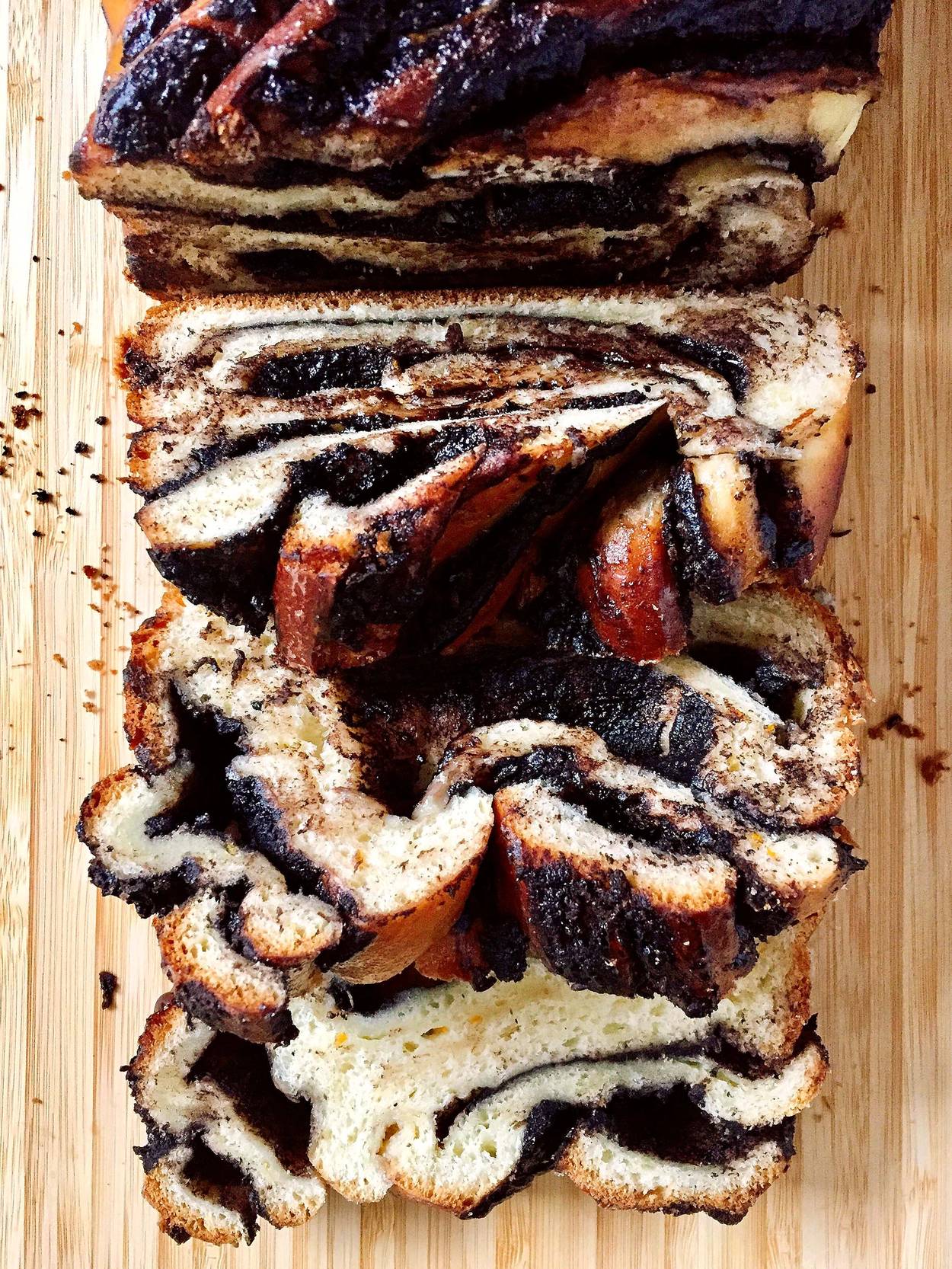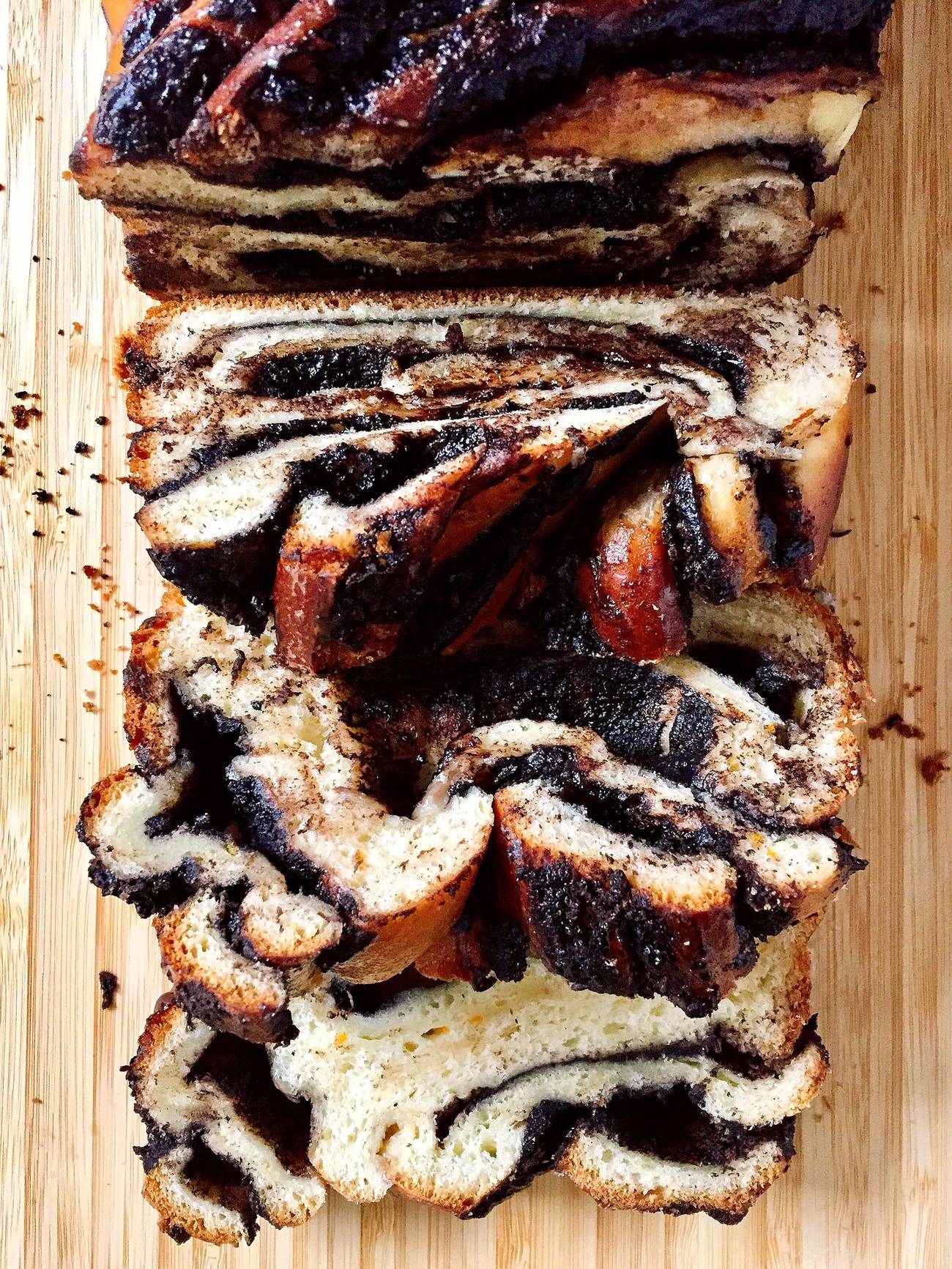Searching for Babka’s Soul
This ‘traditional’ Ashkenazi favorite has evolved many times over the years—and it continues to change with the times




Babka has had quite a journey. Today, the Ashkenazi bread-cake hybrid, which comes swirled with either chocolate or cinnamon, is a worthy contender for most coveted Jewish pastry. But for much of its history, babka was something of a throwaway—a plus-one on the shiva table. It had its devotees, sure, but hardly the star power of rugelach or a decadent cheesecake. Thanks to Seinfeld’s infamous 1994 “Dinner Party” episode, babka enjoyed a boost in mainstream name recognition. But television did nothing to change the fact that eating a slice of babka—which was too often dry and cloyingly sweet—was a comparatively humdrum experience.
Then, everything changed. In 2012, the Jewish American food world was shaken by a seismic force with the publication of Jerusalem: A Cookbook co-written by Israeli chef Yotam Ottolenghi and Palestinian chef Sami Tamimi. In addition to introducing a generation of home cooks to za’atar, preserved lemons, and the joys of dolloping labne on virtually everything, the book’s chocolate babka (which they called a krantz cake—more on that in a moment) changed people’s notions of what babka could, and should, be.
To start, Jerusalem’s babka dough was enriched with butter (and lots of it), instead of the oil typically used by kosher bakeries to keep the pastries dairy-free. In older babka recipes, the filled ropes of dough were either braided or twisted as if one was wringing out a hand towel. But Jerusalem’s babka ropes were slit vertically down the center, exposing the layers of chocolate within, then twisted into a messy plait that facilitated countless ribbons of filling.
Perhaps most noticeably, instead of a downy layer of streusel, which virtually all American Jewish babkas featured, the cookbook’s babka loaves were crumb-free. Instead, they gleamed with the simple syrup that is a hallmark of Middle Eastern baking—which helps keep the briochelike pastry moist. To those most familiar with the old-style Eastern European babka, this new babka looked exposed, almost naked, without its homely streusel cap. The effect was deeply appealing. As Deb Perelman later wrote on her blog Smitten Kitchen about Jerusalem’s babka, “Nobody even remembered the old babka, they just wanted more of this one, as soon as possible.”
A few months later in early 2013, an Israeli patisserie and cafe called Breads Bakery opened just off Union Square in Manhattan, introducing a similar babka. Their version was swirled with Nutella, brushed with sugar syrup, and even more buttery than the one in the Jerusalem cookbook. And it commanded eaters’ full attention. Breads’ babka was made with laminated dough, similar to a croissant, and had the sticky-flaky crunch to prove it. Even more than Jerusalem’s babka, Breads’ version defied, or perhaps redefined, the entire category.
“The laminated dough really presented a new taste for people,” said Shannon Sarna, author of Modern Jewish Baker and editor of The Nosher. “They loved the mashup between elevated French-style pastry and classic Eastern European cake.”
Jerusalem and Breads’ babkas were modeled after krantz cake, a babka-adjacent confection that originally hails from Germany. As Ottolenghi wrote, krantz cakes are “the most popular cake in the west side of Jerusalem, and probably in the whole country.” Breads Bakery co-founder Uri Scheft wrote in his cookbook Breaking Breads that they originally called the pastry a krantz. But he soon realized that the name (krantz is German for “wreath,” in honor of the cake’s typical ring shape) didn’t translate well with American customers. “We decided to call it chocolate babka instead, and within three months, our babka was selected by New York Magazine as the best in New York City,” he writes.
As compelling to look at as they are to eat, both babkas also took over on social media, where they continue their reign today. As far as home bakers and pastry influencers are concerned, these babkas (and others like them) are babka, full stop. Scrolling through Instagram’s babka feed, it appears as if the Ashkenazi pastry of yore has been largely erased.
Then again, transformation has always been a part of babka’s story. Babka hails from Poland, where there are two pastries with the same name. Non-Jewish Poles bake yeasted briochelike cakes in tall, tube pans and call them babka (a diminutive of the Polish and Yiddish word “baba,” or grandmother). Meanwhile, according to The Encyclopedia of Jewish Food by Gil Marks, “Jewish babka evolved in early 19th-century Poland from the Sabbath egg challah when housewives prepared extra dough, spread it with a little jam or cinnamon ... rolled it up, and baked it alongside the bread.”
After babka made its way from Eastern Europe to America, it became a fixture of kosher bakeries. And it was there that the balabusta’s treat evolved into the pastry we recognize today. For many American Jews, the ultimate old school babka comes from Green’s Bakery in Williamsburg, Brooklyn. The bakery’s origins date back to 1948 when Chana Green, a Holocaust survivor, immigrated from Hungary to New York City. Green was a skillful baker who gained a local following for her yeasted cakes and started selling them at her son-in-law’s restaurant in 1980.
A decade later, just a few years before Seinfeld launched a national conversation about babka and “lesser babka,” the family opened a commercial bakery. Green’s products quickly made their way onto shelves at grocery stores and gourmet food shops like Fairway, Zabar’s, Wegmans, Whole Foods, and the now-closed Dean & Deluca. They also began shipping nationally.
As New York’s biggest babka wholesaler (they currently bake around 24,000 babkas each week), they also partnered with iconic Jewish food establishments, allowing the shops to repackage Green’s babka under their own brand name. Some customers swore allegiance to the perfect streusel crumb topping on Second Avenue Deli’s babka, while others insisted that Katz’s babka had the most swirls in town. The joke was on them because the babkas were one and the same. Before long, it was fair to assume that if somebody was talking about babka, they were probably thinking about Green’s.
But Chana Green was Hungarian, not Polish, and well versed in her own country’s extraordinary repertoire of breads and cakes. That included a chocolate-filled rolled pastry called kokosh. Like babka, kokosh is made with an enriched, yeasted dough. But the dough’s rise time is abbreviated, resulting in a squatter pastry with ultrathin, tender layers that collapse around the dense, fudgy filling. And according to family lore, the first cakes she sold were actually kokosh, not babka.
Now, Chana Green baked babka, too—if not in Hungary, then after encountering it in New York City. But Green’s babka, which is still made today according to her original recipe, was almost certainly inspired by kokosh.
So here we are. Eastern Europe’s humble yeasted pastry made from leftover challah dough transformed in America into a streusel-topped, dairy-free, densely swirled loaf. And then, two generations later as Israeli and Middle Eastern cuisine began to dominate American culinary consciousness, the pastry shape-shifted once again into a buttery, syrup-painted darling of social media and Sunday brunch.
Of course, not everyone has jumped onto the nouveau babka bandwagon. In Ann Arbor, Michigan, the beloved deli and bakehouse Zingerman’s makes an updated take on classic babka. The layers consist of chocolate ganache, ground up chocolate brownie crumbs, and rum-soaked raisins, and the loaves are crowned with a crunchy, cinnamon-sugar crumb. In San Francisco, Wise Sons Bakery’s babka loaf also nods to the past but with Guittard chocolate and oversized, pluckable bits of streusel.
And in New York City, Russ & Daughters bakes immensely craveable chocolate and cinnamon babkas. For most of its history, Russ & Daughters partnered with independent bakeries to source babka. But in 2015, they opened their own bakeshop in Brooklyn, allowing them to produce bagels, black & whites, babka, and other baked goods for their shop and restaurant locations. Despite the growing hype around the newer babka style (which by 2015 had reached a fever pitch in New York City), they stayed true to their Old World mission. Their traditional chocolate babka is threaded through with Valrhona chocolate and a touch of coffee, and blond nubs of streusel are scattered liberally across the top. “We are all about maintaining continuity of taste and memory,” said current, fourth-generation, co-owner Niki Russ Federman. “Our goal is to take traditional recipes and elevate them. We wanted to make the platonic Ashkenazi version of babka.”
One tradition, two styles, neither of which is the same as what babka once was. So which babka is the real deal? Can one version claim to capture the baked good’s authentic soul? Certainly the both/and approach is the most appropriate frame. Babka’s evolution story, after all, is a microcosm of Jewish cuisine as a whole. Communities move, times and tastes change, and the foods we eat serve as a place holder for where we are, and where we are going. Old or new, as long as babka is made with care (and good ingredients, please), our collective table is big enough for both.